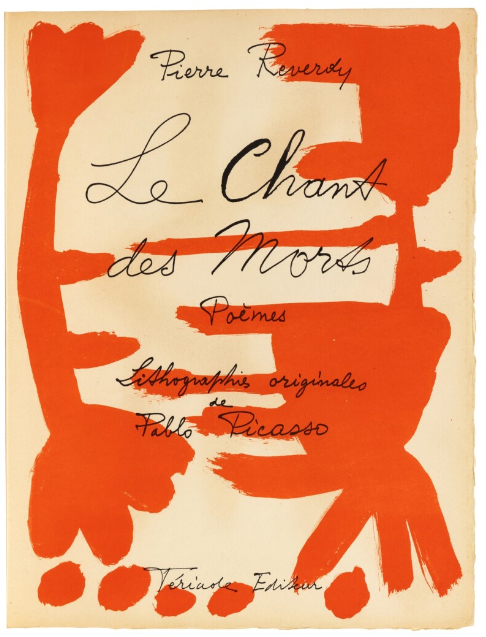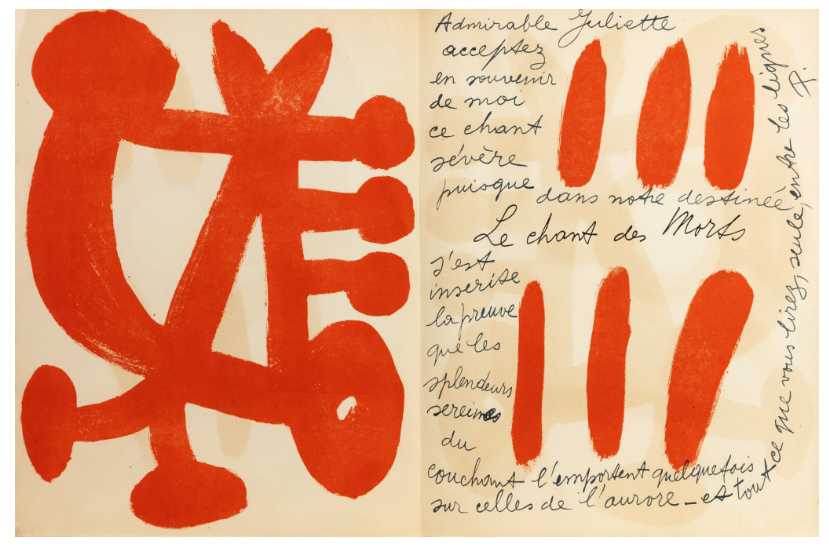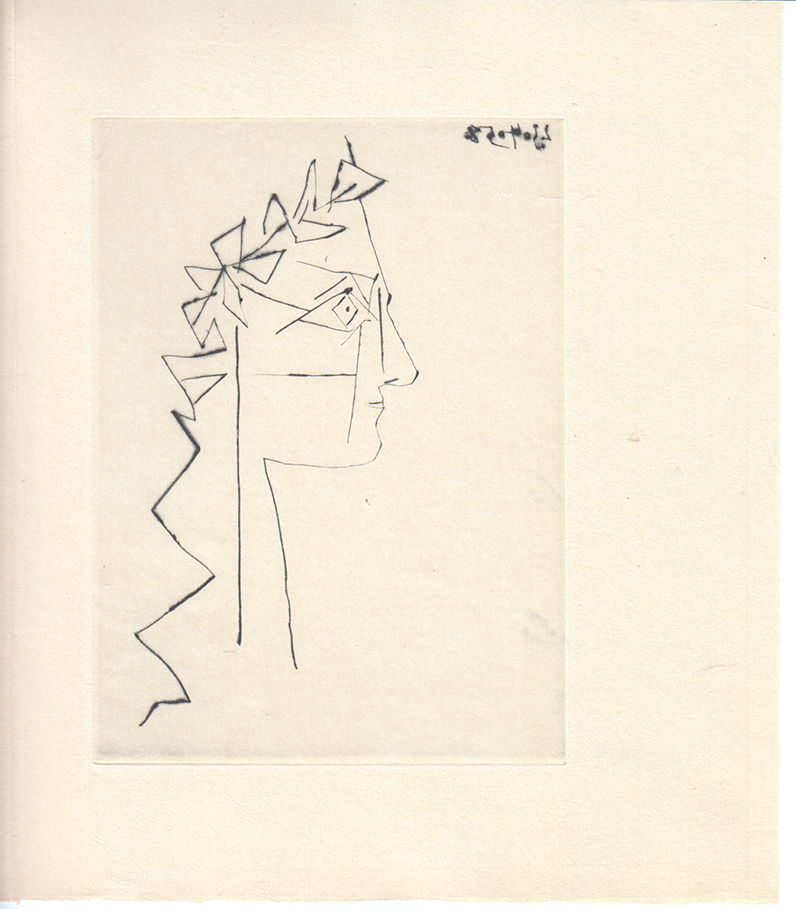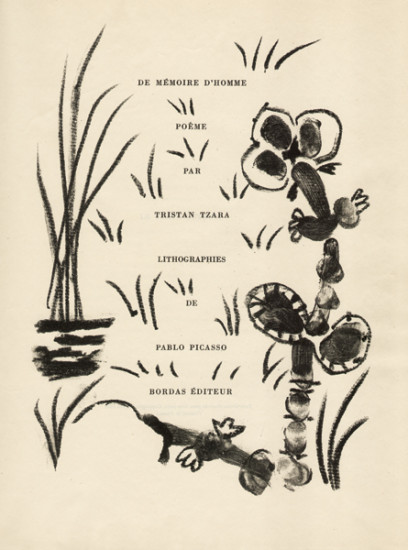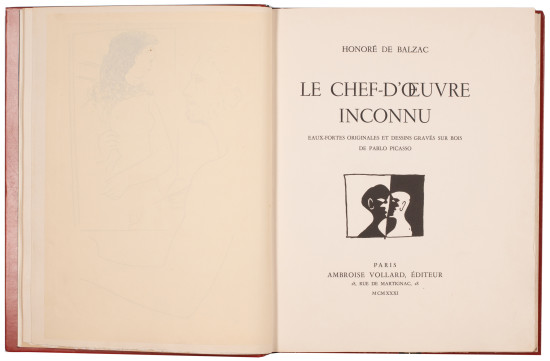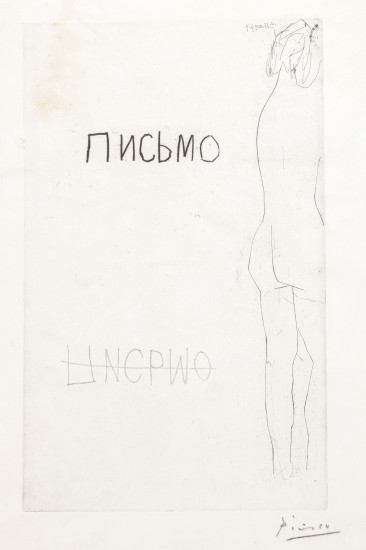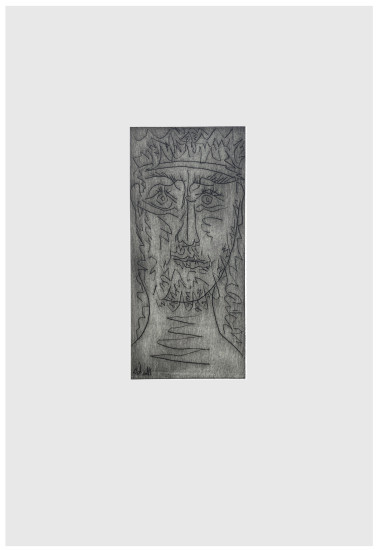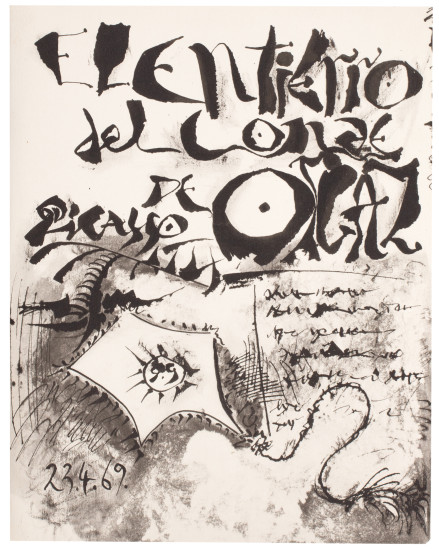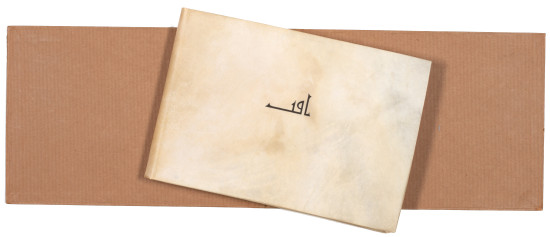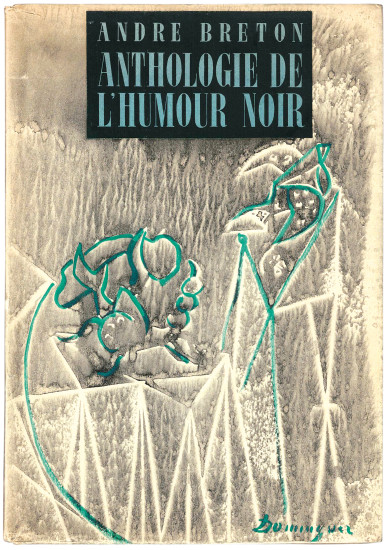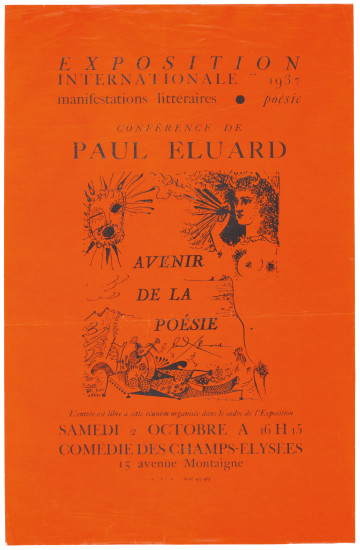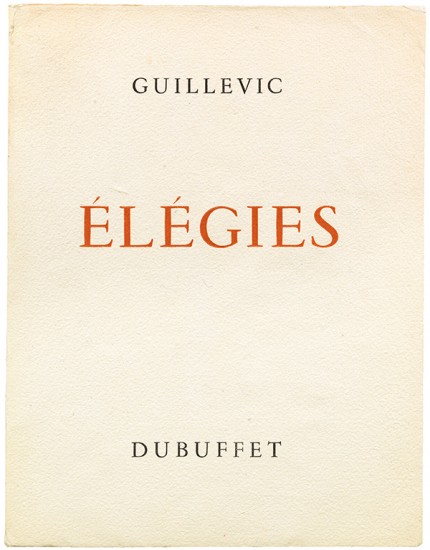Le Chant des Morts. Lithographies originales de Pablo Picasso
Picasso, Pablo. Reverdy, Pierre
Paris. Tériade. 1948
A scarce presentation copy of 'Le Chant des Morts', Reverdy's collaboration with Picasso, the only book Picasso made with Tériade.
From the edition limited to 270 copies, with this one of 20 hors commerce copies numbered in Roman numerals and signed by Picasso and Reverdy.
Reverdy's poetic presentation is in black ink and surrounds the half-title: 'Admirable Juliette / acceptez / en souvenir / de moi / ce chant / sévère / puisque dans notre destinée / [printed half-title] s'est / inscrite / la preuve / que les / splendeurs / sereines / du couchant l'emportent quelquefois / sur celles de l'aurore - et / tout ce que vous lirez, seule, entre les lignes / P.'.
A further poetic quotation has been added by Reverdy in the margin at the head of page 40 in matching ink: 'Je me suis étendu sous les paliers de cendre / Et tu t'es élevé sur les colonnes d'or / Aux gouffres du malheur je ne peux plus descendre / le ciel est dépassé / Il surplombe la mort'.
'Collaboration between Picasso and Tériade began in the days when the young Greek was in charge of the modern section of Christian Zervos's Cahiers d'Art. It continued through 1933-36, when Tériade worked with Albert Skira on Minotaure, another well known art review. When Tériade began his own artistic and literary magazine, Verve, in 1937, he was to devote three entire issues to Picasso, the first of these appearing in April 1948. In spite of these contacts, and continually renewed friendship between the two men, the opportunity of collaborating on an illustrated book occurred only once. On this occasion, Picasso was to create a new type of book illustration ... On January 5, 1945 Reverdy finished a series of 43 poems he called 'Le Chant des Morts'. At first, Picasso thought he would illustrate the text in the usual way - that is, with illustrations separated from the text. The artist changed his mind, however, and decided instead to illustrate Reverdy's text page by page, in the manner of the old illuminated manuscripts. Picasso perceived Reverdy's large handwriting, which filled the pages without crowding them, as an arrangement of little black signs which he could complete with large red strokes resembling oriental calligraphy. The manuscript is thus illuminated, which gives a ritual, religious character to the work.' (Patrick Cramer).
[Cramer 50].
From the edition limited to 270 copies, with this one of 20 hors commerce copies numbered in Roman numerals and signed by Picasso and Reverdy.
Reverdy's poetic presentation is in black ink and surrounds the half-title: 'Admirable Juliette / acceptez / en souvenir / de moi / ce chant / sévère / puisque dans notre destinée / [printed half-title] s'est / inscrite / la preuve / que les / splendeurs / sereines / du couchant l'emportent quelquefois / sur celles de l'aurore - et / tout ce que vous lirez, seule, entre les lignes / P.'.
A further poetic quotation has been added by Reverdy in the margin at the head of page 40 in matching ink: 'Je me suis étendu sous les paliers de cendre / Et tu t'es élevé sur les colonnes d'or / Aux gouffres du malheur je ne peux plus descendre / le ciel est dépassé / Il surplombe la mort'.
'Collaboration between Picasso and Tériade began in the days when the young Greek was in charge of the modern section of Christian Zervos's Cahiers d'Art. It continued through 1933-36, when Tériade worked with Albert Skira on Minotaure, another well known art review. When Tériade began his own artistic and literary magazine, Verve, in 1937, he was to devote three entire issues to Picasso, the first of these appearing in April 1948. In spite of these contacts, and continually renewed friendship between the two men, the opportunity of collaborating on an illustrated book occurred only once. On this occasion, Picasso was to create a new type of book illustration ... On January 5, 1945 Reverdy finished a series of 43 poems he called 'Le Chant des Morts'. At first, Picasso thought he would illustrate the text in the usual way - that is, with illustrations separated from the text. The artist changed his mind, however, and decided instead to illustrate Reverdy's text page by page, in the manner of the old illuminated manuscripts. Picasso perceived Reverdy's large handwriting, which filled the pages without crowding them, as an arrangement of little black signs which he could complete with large red strokes resembling oriental calligraphy. The manuscript is thus illuminated, which gives a ritual, religious character to the work.' (Patrick Cramer).
[Cramer 50].
[68 bifolia + additional bifolium with a presentation by Reverdy: 70 leaves; pp. 117, (vi), (i)]. Folio. (426 x 328 mm). Leaf with illumination by Picasso recto and verso, leaf with half-title, Reverdy's presentation (see below) and illumination recto and verso, leaf with title and illumination recto and verso and Reverdy's verse on 56 leaves with illumination recto and verso, leaf with 'achevé d'écrire' dated 'le 5 Janvier 1945 à Solernes', 2 leaves with 'Pages' (contents) and illumination recto and verso, final leaf with achevé d'imprimer and justification recto and copyright verso,, the text reproduces Reverdy's manuscript throughout and Picasso's illumination is reproduced in lithography (125 original lithographs in total) in vibrant orange throughout; this copy includes an additional example of the bifolium with the half-title with a presentation by Reverdy. Loose as issued in original publisher's printed wrappers with lithograph decoration in orange to front and rear covers and spine, original cream board chemise.
#48676
